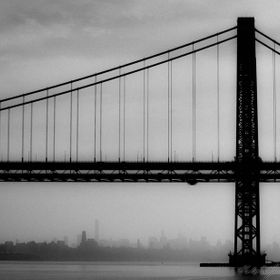

nataliejumper
FollowViews
438
Likes
Top Choice
Superb Composition
Absolute Masterpiece
Outstanding Creativity
Jaw Dropping
Peer Award
Top Ranks
Categories
Same photographer See allBehind The Lens
Discover more photos See all
Behind The Lens
Location
I was in Southern Utah, near Bicknell, out on the Goosenecks. It's a little ways into Capitol Reef National Park.Time
It's was around 10:30pm.Lighting
I was shooting in the dead of night, practicing with timed exposures to capture star trails and the Milky Way. I had just clicked the shutter to do some star trails when that lightning bolt came down.Equipment
I was using a Canon 60D body with a 18-55mm lens with image stabilization, and a Proline carbon fiber tripod with a Canon remote to reduce noise and leave the shutter open for the desired length of time.Inspiration
Space has always been something that greatly inspired me. I constantly look up and marvel at the stars, and I'd recently read an article on astrophotograph, so I really wanted to try my hand at it. Southern Utah is perfect for doing this type of photography because there isn't much in the way of light pollution down there. There are such gorgeous landscapes that just add so much depth to an already vivid sky. Down in Southern Utah, we get thunderstorms that roll and build, so watching thunderheads build while taking pictures of the stars was invigorating.Editing
I got really lucky in terms of how bright that bolt of lightning was, that I really didn't have to do much in the way of editing the photo to make colors work, or to have anything stand out. The foreground was in focus just enough that I didn't need to over lay any previous frames to make sure the trees were in focus. I did play with the contrast, and the shadows and highlights a little, to make the clouds REALLY pop.In my camera bag
First thing I always make sure is in my pack is my 18-55mm lens for my Canon. I have been so fortunate with that lens, that it's my go to lens. After that I make sure I have my body, an extra battery and memory cards; I usually shoot with a Canon 60D. Then I have my Mind Shift pack that has all of my Neutral Density, UV, B&W, and Polarizing filters. I have filters for both 52mm and 58mm settings. My go to TriPod is by ProLine. I love their Carbon Fiber tripod. It's so light and easy to adjust that it makes getting the right angles so easy. I also carry a fixed 50mm lens, a 75-300m lens (excellent for taking photos of the moon!), and a 55-250mm IS lens that I use mostly for capturing wildlife.Feedback
Be patient. Thunderstorms are so unpredictable, that you could be having lighting coming down every 10 seconds or every 5 minutes. It's all a game of waiting. Also be aware of how quickly a storm is moving. After capturing this photo, and a few after it, I had to get down off of the mountain I was on because the storm was moving so fast. It was a good thing I did as the storm ended up striking not far from where I'd parked my car. It's always important to be safe when shooting weather like this. Also, play with your settings. I was shooting with Aperture: f/2.8 ISO: 1250 Exposure: 3/1 on this photo, but previous to that I had kicked my ISO all the way out to 6400 for better star capture. It's all a matter of the details you want to capture. Pay attention to your histogram. Make sure your little bell curve isn't too far off to one side. That will make the post-edits so much easier.











































